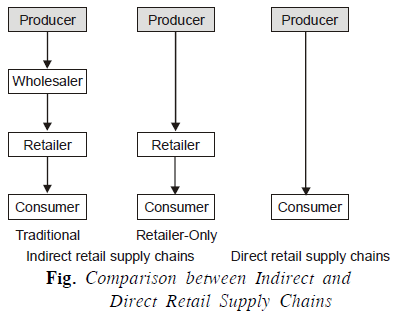UGC NET COMMERCE June 2019 Q30
0. The retail supply chain does NOT include:
- Option : D
- Explanation : While the complexities of supply chains have increased in recent years, the basic structures of supply chains are fairly straightforward, as shown in Figure. The figure shows three basic supply chain structures, divided into two types: indirect and direct supply chains. Indirect supply chains utilize one or more marketing intermediaries to get products from the producer to the consumer. The number of intermediaries can vary widely depending on the product type and place strategy. The trend in recent years has been to use fewer intermediaries as power and control has shifted to retailers who have begun taking on their own wholesaling operations. Traditional indirect supply chains include wholesalers, while others only include a retailer. The tendency for retailers to bring wholesaling in-house has led to a decline in the number of independent wholesalers.

Producers use direct retail supply chains when selling directly to consumers. Online retailing had driven growth in direct supply chains that bypass physical stores and sell directly to consumers through their websites.


